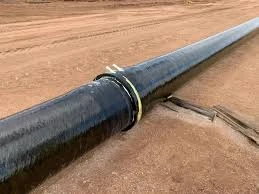
-
 Afrikaans
Afrikaans -
 Albanian
Albanian -
 Amharic
Amharic -
 Arabic
Arabic -
 Armenian
Armenian -
 Azerbaijani
Azerbaijani -
 Basque
Basque -
 Belarusian
Belarusian -
 Bengali
Bengali -
 Bosnian
Bosnian -
 Bulgarian
Bulgarian -
 Catalan
Catalan -
 Cebuano
Cebuano -
 China
China -
 China (Taiwan)
China (Taiwan) -
 Corsican
Corsican -
 Croatian
Croatian -
 Czech
Czech -
 Danish
Danish -
 Dutch
Dutch -
 English
English -
 Esperanto
Esperanto -
 Estonian
Estonian -
 Finnish
Finnish -
 French
French -
 Frisian
Frisian -
 Galician
Galician -
 Georgian
Georgian -
 German
German -
 Greek
Greek -
 Gujarati
Gujarati -
 Haitian Creole
Haitian Creole -
 hausa
hausa -
 hawaiian
hawaiian -
 Hebrew
Hebrew -
 Hindi
Hindi -
 Miao
Miao -
 Hungarian
Hungarian -
 Icelandic
Icelandic -
 igbo
igbo -
 Indonesian
Indonesian -
 irish
irish -
 Italian
Italian -
 Japanese
Japanese -
 Javanese
Javanese -
 Kannada
Kannada -
 kazakh
kazakh -
 Khmer
Khmer -
 Rwandese
Rwandese -
 Korean
Korean -
 Kurdish
Kurdish -
 Kyrgyz
Kyrgyz -
 Lao
Lao -
 Latin
Latin -
 Latvian
Latvian -
 Lithuanian
Lithuanian -
 Luxembourgish
Luxembourgish -
 Macedonian
Macedonian -
 Malgashi
Malgashi -
 Malay
Malay -
 Malayalam
Malayalam -
 Maltese
Maltese -
 Maori
Maori -
 Marathi
Marathi -
 Mongolian
Mongolian -
 Myanmar
Myanmar -
 Nepali
Nepali -
 Norwegian
Norwegian -
 Norwegian
Norwegian -
 Occitan
Occitan -
 Pashto
Pashto -
 Persian
Persian -
 Polish
Polish -
 Portuguese
Portuguese -
 Punjabi
Punjabi -
 Romanian
Romanian -
 Russian
Russian -
 Samoan
Samoan -
 Scottish Gaelic
Scottish Gaelic -
 Serbian
Serbian -
 Sesotho
Sesotho -
 Shona
Shona -
 Sindhi
Sindhi -
 Sinhala
Sinhala -
 Slovak
Slovak -
 Slovenian
Slovenian -
 Somali
Somali -
 Spanish
Spanish -
 Sundanese
Sundanese -
 Swahili
Swahili -
 Swedish
Swedish -
 Tagalog
Tagalog -
 Tajik
Tajik -
 Tamil
Tamil -
 Tatar
Tatar -
 Telugu
Telugu -
 Thai
Thai -
 Turkish
Turkish -
 Turkmen
Turkmen -
 Ukrainian
Ukrainian -
 Urdu
Urdu -
 Uighur
Uighur -
 Uzbek
Uzbek -
 Vietnamese
Vietnamese -
 Welsh
Welsh -
 Bantu
Bantu -
 Yiddish
Yiddish -
 Yoruba
Yoruba -
 Zulu
Zulu
fiberglass weir
Understanding Fiberglass Weirs An Efficient Water Management Solution
Water management is a critical aspect of various industries, including agriculture, civil engineering, and environmental conservation. Weirs, structures used to regulate water flow, have been fundamental in controlling water levels in rivers, streams, and irrigation systems. Among the materials used to construct these vital structures, fiberglass has emerged as a preferred choice due to its numerous advantages over traditional materials.
What is a Fiberglass Weir?
A fiberglass weir is a barrier placed across a waterway designed to alter the flow characteristics of the water. Unlike conventional weirs made from concrete or metal, fiberglass weirs are constructed from a composite material known for its strength, lightweight properties, and resistance to corrosion. This makes fiberglass an ideal choice for applications in regions where water levels fluctuate significantly or where harsh environmental conditions, such as high salinity and UV exposure, are present.
Advantages of Fiberglass in Weir Construction
1. Durability Fiberglass is inherently resistant to corrosion, unlike metal, which can rust, or concrete, which can deteriorate over time due to water exposure. This durability extends the lifespan of the weir, reducing the frequency and cost of maintenance.
2. Lightweight Fiberglass is significantly lighter than traditional materials, making it easier to transport and install. This feature not only lowers installation costs but also allows for the construction of larger weirs in locations that may be challenging to access.
fiberglass weir

3. Customizability Fiberglass can be molded into various shapes and sizes, allowing for tailored solutions that meet specific water management needs. Whether it’s a small irrigation channel or a large river management system, fiberglass weirs can be designed to fit the exact specifications required.
4. Cost-Effectiveness Although the initial investment in fiberglass weirs may be higher than that of some traditional materials, the long-term savings in maintenance and replacement make it a more economical choice over time. The reduced need for repairs significantly contributes to overall cost savings.
5. Environmental Impact The use of fiberglass weirs can have a positive impact on the environment. Their design minimizes disturbance to existing ecosystems and can help in the preservation of aquatic habitats. Furthermore, fiberglass does not leach harmful substances into waterways, promoting healthier aquatic environments.
Applications of Fiberglass Weirs
Fiberglass weirs are used in diverse applications across multiple sectors. In agriculture, they play a significant role in managing irrigation systems by controlling water distribution effectively. In municipal applications, these structures are crucial for managing stormwater runoff and preventing flooding in urban areas. Additionally, fiberglass weirs are advantageous in environmental restoration projects, helping to maintain water levels in sensitive ecological zones and supporting fish migration.
Conclusion
As the need for effective water management solutions grows, particularly in the face of climate change and increasing population demands, fiberglass weirs present a compelling alternative to traditional materials. Their unique combination of durability, lightweight design, and cost-effectiveness makes them an excellent choice for a variety of applications. Whether in agriculture, urban infrastructure, or ecological conservation, fiberglass weirs offer a sustainable solution to managing water resources efficiently. As technology advances and the field of water management evolves, we can expect to see an increasing reliance on innovative materials like fiberglass to address the challenges of tomorrow.
Latest news
-
Exploring the Benefits of Top Hammer Drifter Rods for Enhanced Drilling PerformanceNewsJun.10,2025
-
High-Precision Fiberglass Winding Machine for GRP/FRP Pipe Production – Reliable & Efficient SolutionsNewsJun.10,2025
-
FRP Pipes & Fittings for Shipbuilding - Corrosion-Resistant & LightweightNewsJun.09,2025
-
Premium FRP Flooring Solutions Durable & Slip-ResistantNewsJun.09,2025
-
Premium Fiberglass Rectangular Tanks Durable & Lightweight SolutionNewsJun.09,2025
-
Tapered Drill String Design Guide Durable Performance & UsesNewsJun.09,2025









